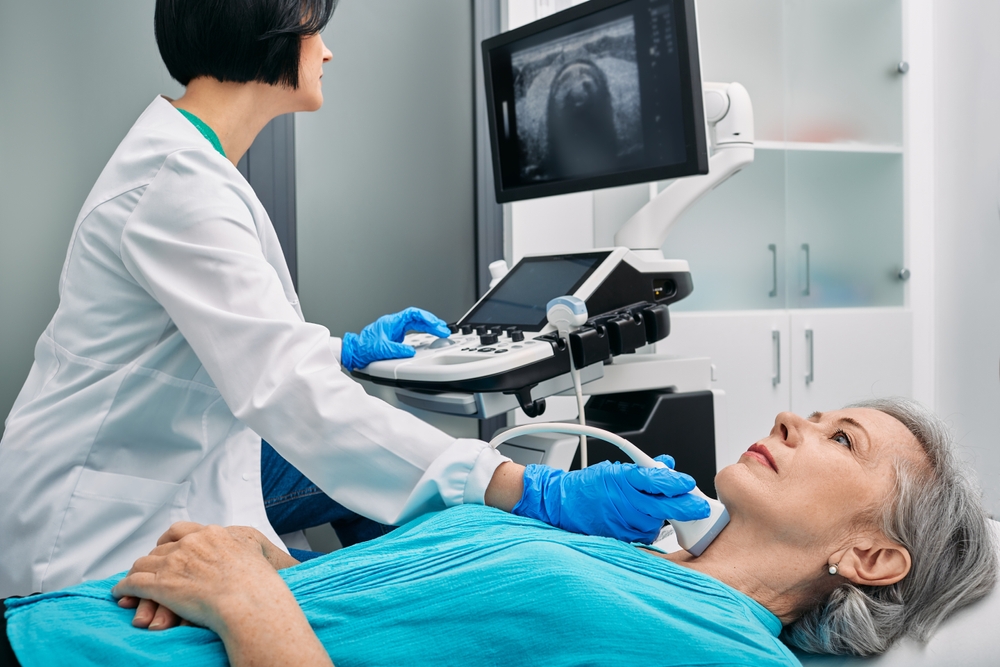How Ultrasound Accessibility is Growing Through Cost Effective Diagnostics & Treatment
 In a perfect vision of society, healthcare would be universally accessible, with timely and effective treatment available to all. Yet the reality is often marred by challenges such as geographic isolation, financial constraints, and a scarcity of resources, all of which hinder access for many communities.
In a perfect vision of society, healthcare would be universally accessible, with timely and effective treatment available to all. Yet the reality is often marred by challenges such as geographic isolation, financial constraints, and a scarcity of resources, all of which hinder access for many communities.
Amid these challenges, advancements in medical technology are emerging as a promising avenue to bridge these gaps, particularly through innovations in ultrasound accessibility. This technology is revolutionizing healthcare accessibility by enhancing the portability, affordability, and usability of diagnostic and treatment processes. It’s empowering both patients and medical professionals.
Ultrasound Accessibility: Care for rural and underserved communities
Traditional ultrasound machines have long been a cornerstone of medical diagnosis. But their bulky size and complex operations often confine them to hospital settings. This creates a significant hurdle for rural and underserved communities, where access to specialists and advanced medical facilities can be limited.
Portable ultrasound devices are an answer to this issue. These compact, lightweight machines are designed for on-site diagnostics, empowering healthcare providers to bring care directly to patients. Their durability and immediate applicability make them suitable for various settings — from remote clinics to ambulances — while expanding the pool of skilled personnel who can perform essential ultrasound examinations in areas with limited access to specialists.
Affordability: Cost-effective diagnostics and treatment
Traditional diagnostic methods like CT scans and MRIs, while valuable, can be prohibitively expensive for many patients and healthcare systems. This is where ultrasound bridges important gaps.
Ultrasound technology offers an alternative to cost effective diagnostics. The upfront cost of an ultrasound machine is considerably lower compared to its more complex counterparts. Ultrasound examinations themselves are less expensive to conduct, with no radiation exposure or special requirements for the patient. This translates to quicker turnaround times and potentially fewer follow-up procedures — further contributing to cost savings.
Ultrasound is also highly efficient. By providing real-time visualization of internal organs and tissues, ultrasound can expedite diagnoses, potentially leading to earlier interventions and reduced complications. This improves patient outcomes and helps to maximize cost effective treatments down the line.
The development of more affordable ultrasound solutions specifically designed for resource-constrained settings is further expanding access to cost-effective diagnostics.
 Usability: Empowering current and future clinicians
Usability: Empowering current and future clinicians
Ultrasound technology isn’t just improving access to healthcare; it’s also transforming the way future healthcare professionals are trained and equipped. Here’s how:
- Enhanced clinical education: Ultrasound’s portability and real-time visualization make it an ideal tool for clinical education. Students can gain valuable hands-on experience performing examinations and interpreting images, fostering a deeper understanding of human anatomy and disease processes. This practical training prepares them to confidently utilize ultrasound in their future practices.
- AI-powered workflow intelligence: AI algorithms can analyze ultrasound images, highlighting potential abnormalities and guiding clinicians during examinations. This empowers novice practitioners while streamlining workflow for experienced clinicians and allowing them to focus on patient interactions and outcomes.
- Advanced imaging precision: Ultrasound probes are constantly evolving, offering ever-increasing image quality and resolution. This allows for more precise visualization of organs and tissues, leading to earlier detection of abnormalities and improved diagnostic accuracy. This aids clinicians of all experience levels in making more informed decisions regarding patient care.
These innovations and the peripheral technologies driving them are pushing ultrasound to the forefront of patient care. From mobile health clinics serving rural communities to specialty medicine in the world’s most innovative medical centers, ultrasound is becoming an important resource wherever patient care happens.
Ultrasound: Potential meets progress
Ultrasound technology isn’t a magic bullet, but it represents a significant leap forward in democratizing healthcare. By offering portability, affordability, and a user-friendly approach, ultrasound empowers medical professionals to reach more people and deliver faster, more accurate diagnoses.
As the technology continues to evolve with AI integration and advanced imaging, its impact on healthcare accessibility is poised to grow even stronger, supporting a brighter future for equitable medical care.

 Usability: Empowering current and future clinicians
Usability: Empowering current and future clinicians